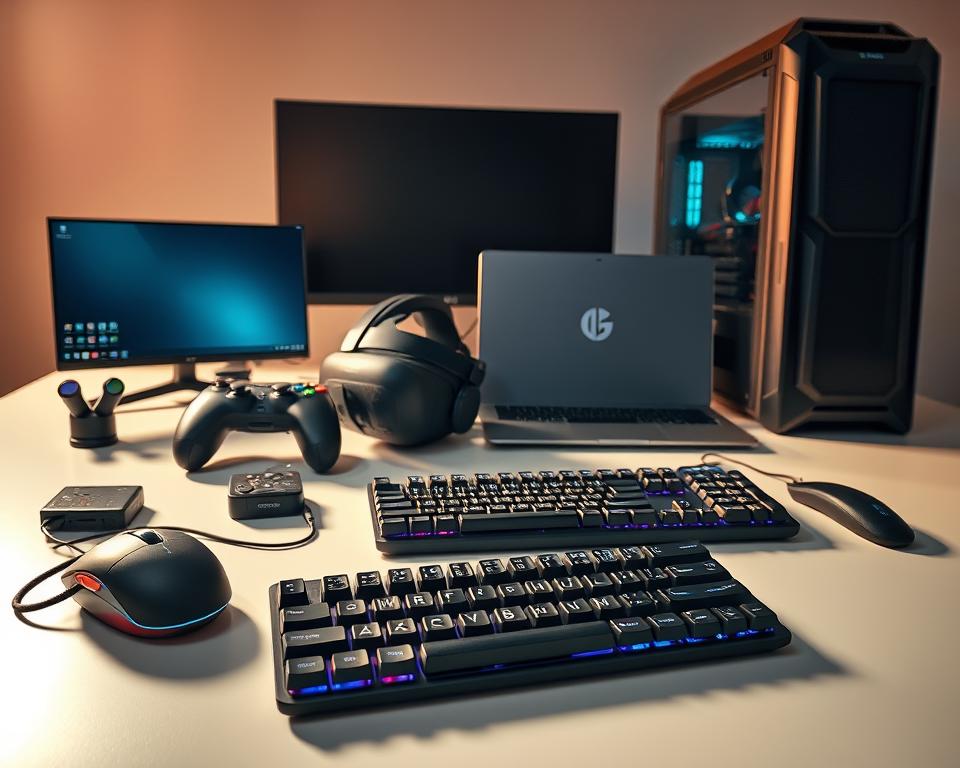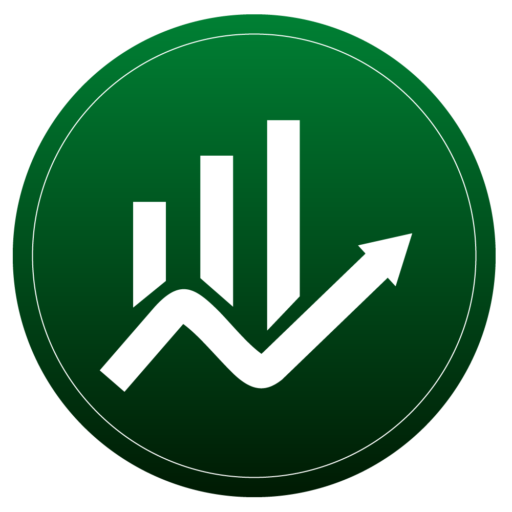Anúncios
play to earn tools help you find crypto games and manage on-chain assets with less friction.
Many modern games let players own NFTs and record that ownership on the blockchain via smart contracts. Some titles start with free nfts while others require buying entry items on native or third-party marketplaces. The market was about $3,292.73M in 2023 and may exceed $8,856M by 2028.
This section shows why the right setup matters. You will see how dashboards link your wallet, tokens, and rewards in one place. Real examples include Axie Infinity (Ronin, AXS/SLP), The Sandbox (SAND), Decentraland (MANA/LAND), and Splinterlands (HIVE/WAX).
You’ll learn which accounts and checks lower risk, how discovery feeds surface drops, and why verification matters before you approve contracts. Ready to see which pieces make onboarding smooth and secure?
Introduction to play to earn tools and why they matter right now
A growing number of titles now convert player rewards into tokens and NFTs that you can trade on public ledgers.
The shift changes how you value in-game progress. Smart contracts record ownership and let assets move across marketplaces. This gives items clear on-chain value, not just cosmetic flair.
Decentralized economies mean players manage wallets, approvals, and transfers. That matters because your assets live in your address, not on a company server.
The shift from in-game rewards to tokenized value
Blockchains turn rewards into traceable assets. Characters, land, and currencies become transferable tokens. This encourages new strategies around scarcity and utility.
How ownership and trading reshape gameplay and strategy
- Open ownership lets items travel between games and markets, changing long-term planning.
- Trading adds strategy: you must weigh liquidity, fees, and timing against short-term wins.
- Clear wallet approvals and revocations reduce risk when contracts interact with your assets.
The essential P2E toolkit: your baseline stack
Your onboarding is smoother when you use a clear kit: a wallet, a marketplace, analytics, and a security layer.
Quick roundup: many games ask for an NFT to start, while others give free items. Items show ownership on-chain through smart contracts, so your assets are verifiable.
Wallet, marketplace, analytics, and security at a glance
- Self-custody wallet: pick one with chain support, hardware compatibility, recovery options, and fee controls that match the games you chase.
- Marketplace choice: use native portals for game-specific listings or multi-game hubs for liquidity and price comparison.
- Portfolio and analytics apps: scan floor moves, rarity, and token volumes so players compare utility, not hype.
- Security checks: approval trackers, revoke functions, and signature previews cut risk before you connect to dapps.
Start small: test with tiny transactions and read official docs. Add bridges, DEXs, and staking dashboards as your list of games and assets grows.
Keep your kit lean at first. Expand only when you need alerts, backups, and hardware protection for larger holdings.
Wallets for NFTs and tokens: where your assets live
Think of a wallet as your digital safe for NFTs, tokens, and other on-chain assets. Your choice shapes convenience, fees, and how easily players move items between platforms.
Non-custodial vs. custodial: choosing control and convenience
Non‑custodial wallets give you the seed phrase and full ownership. That boosts security but adds responsibility.
Custodial options trade some control for convenience and faster recovery. Use them for low-value experiments and non‑critical interactions.
Chain support and bridges
Match your wallet to the game: Ronin for Axie Infinity, Ethereum/Polygon for The Sandbox, and HIVE/WAX for Splinterlands.
When assets must move across chains, use a bridge and test with tiny transfers. Add networks by setting custom RPC endpoints and double‑check chain IDs in official docs.
Backup, seed phrases, and hardware
Write your seed phrases offline and store backups securely. Never share seeds; support will never ask for them.
For larger holdings, consider a hardware wallet and separate one address for experiments and another for core holdings.
- Use transaction previews and set spending caps to avoid unlimited approvals.
- Watch for phishing: fake pop-ups and signature prompts asking broad permissions.
- Choose mobile or desktop based on how you connect: extensions suit quick dapp use; mobile apps help on the go.
NFT marketplaces and in-game exchanges
Native and third-party marketplaces offer different trade-offs for collectors, traders, and casual players.
Native portals include Axie Infinity’s Ronin Market, The Sandbox Marketplace, and Decentraland Marketplace. These match the game’s chain and often list official items and land. Use native sites for smoother deposits and lower bridging friction.
Third-party hubs host a mix of collections. Splinterlands cards, for example, appear on OpenSea and Monster Market. Liquidity and fees vary by platform, so check listings and recent sales before you bid.
How to evaluate before trading
Verify collection contracts and creators first. Confirm token standards and look for the verified badge on the market. Smart contracts record ownership, so a correct contract means safer buys.
- Compare floor trends and historical sales for price context.
- Check trait rarity, gameplay utility, and listing counts to judge liquidity.
- Factor platform fees, creator royalties, and network gas into your break‑even.
“Always test with a small purchase and use official links from game sites.”
Sort filters by class, level, or land zone to find assets that fit your goals. Confirm you’re on the right chain and market contract before approving any purchase.
Discovering games, events, and initial NFT offerings
Finding new games and events is about a clear, repeatable workflow that saves you time and cuts risk.
Start with official channels: subscribe to project blogs, join verified Discord servers, and follow game accounts on X for announcement lanes. Use a shared calendar or a release tracker so you never miss mint windows or tournament registration.
Build a discovery flow:
- Aggregate official blogs, Discord pins, and verified X feeds into one calendar.
- Track on-chain event feeds that list mint times, drop caps, and tournament schedules.
- Set alerts for region-specific times so you don’t miss limited windows.
When evaluating an initial NFT offering, check team docs, audit links, and the roadmap. Confirm mint mechanics: max mints, allowlists, and fee structure. Join AMAs and community calls to clarify rules and post‑mint plans.
Practical tips: follow verified contracts only from official links, simulate gas and set limits before a mint, and archive event details and transaction hashes for later troubleshooting.
Token tools: DEXs, swaps, bridges, and gas optimizers
A reliable swap and bridge workflow is the plumbing that connects your crypto balances with in‑game economies.
Start with small test trades. Use reputable decentralized exchanges for peer‑to‑peer swaps and always check price impact and slippage before confirming.
Swapping for native token and in-game currencies
Choose a DEX with good liquidity for the token pair you need. Low liquidity raises price impact and can make token trades costly.
Set a reasonable slippage tolerance and preview execution cost. If a swap looks expensive, wait or split the trade into smaller parts.
Cross-chain moves: bridging assets safely
Only use official bridge domains and confirm supported chains, confirmations, and wrapped representations.
Security first: review audits, check contract addresses, and avoid blind approvals that grant unlimited spending.
Managing fees: gas trackers and batching transactions
Estimate gas with a tracker and choose lower congestion times when possible. Small delays can save significant fees.
- Batch actions when supported; it can cut fees but verify each step first.
- Revoke old approvals and use spend limits instead of unlimited permissions.
- Bookmark official DEX and bridge domains and enable browser phishing protection.
“Log your swaps and bridge transactions so you can reconcile balances across networks.”
Security and verification for safe trading
Safe trading starts with habits that stop common scams before they touch your wallet.
Smart contract approvals and revocation hygiene
Smart contracts record ownership on the blockchain and execute transfers. That is why you must track allowances you’ve granted.
Use an approval scanner to list active permissions and revoke any you no longer need.
- Keep a running list of active allowances for each address.
- Revoke wide approvals and replace them with spend limits when possible.
- Simulate transactions in your wallet before signing.
Spotting fakes: verify items, collections, and sellers
Verify contract addresses, official links, and creator badges before you buy NFTs or other items.
- Check on-chain metadata and recent sales for the collection.
- Watch for mismatched names, very low prices, or new sellers with no history.
- Confirm downloads and app installers by checksum; limit unknown apps’ permissions.
“Always simulate a transaction and test with a small amount before you commit.”
Practical safety tips: use a hardware wallet and optional passphrase for frequent traders, keep system and wallet apps updated, and practice on testnets or with tiny sums first. These steps help protect your crypto assets and give players reliable habits that reduce risk.
Portfolio and rewards tracking across games
Keep a single dashboard that shows your balances, claimable rewards, and NFTs across every chain you use.
Why consolidate? Multi-chain dashboards aggregate token balances and collectibles from Ethereum, Polygon, Ronin, HIVE/WAX and more. That gives you a unified view of assets and pending payouts.
Use alerts for major token moves and price levels tied to your favorite games. Set notifications for low gas windows so you save time and fees when claiming.
- Tag assets per game and export CSVs for taxes or tracking.
- Monitor claimable rewards, vesting schedules, and season end dates.
- Track floor prices and rarity indexes to value your NFT positions.
Enable private mode or restricted API keys in linked apps to keep your addresses private while keeping functionality.
Reconcile staking, rentals, and delegated items so the dashboard mirrors lent or delegated holdings. Check official docs for tokenomics updates that may change how rewards accrue.
“Review your portfolio weekly and revoke unused approvals monthly.”
Analytics for price, rarity, and market momentum
Analytics give you clear signals that separate hype from genuine market interest.
Reading on-chain signals that matter for players
Start with core metrics that frame context: floor price, trading volume, unique holders, and listing depth. These numbers show liquidity and short-term demand for nfts and tokens.
Compare collections by utility versus cosmetic appeal. Utility-driven items often hold steady value, while purely cosmetic drops spike then fade.
Analyze rarity by trait counts and distribution. Look for traits that gameplay rules amplify — those attributes can lift demand for specific cards or items.
Watch momentum signals: rising unique buyers, faster sale cadence, and whale concentration. Also chart token emissions and sinks to assess dilution risk in a game economy.
- Cross-check multiple dashboards and confirm on-chain records.
- Note event-driven spikes around patches or tournaments.
- Keep a short trade journal explaining each move; it improves judgment over time.
“Use data to frame decisions, not to promise outcomes.”
Guilds, scholarships, and NFT rentals
Guilds and rental programs let newcomers access high-value game assets without a big upfront purchase. These systems pair lenders and borrowers so more players can join competitive matches and earn rewards without owning costly items outright.
How renting NFTs can lower entry cost for players
Rental programs reduce a financial barrier. Instead of buying a rare card or land parcel, you borrow it for a set period and share any earned rewards with the lender.
Setting clear terms, splits, and asset protections
Agree on splits, duration, and performance rules up front. Use smart contracts or escrow listings where possible so ownership stays verifiable and payouts are automatic.
- Rental models: fixed-fee rentals, revenue splits, and time-boxed scholarships.
- Risk controls: non-transferable roles, time-limited access, and revocable permissions.
- Operational checks: reputation reviews, documented schedules, and pause clauses for major patches.
- Compliance & accounting: track rewards and taxes, and keep written agreements for transparency.
“Start with small allocations and expand only after you see consistent, reliable operations.”
Choose guilds that document expectations and provide dispute channels. Test arrangements with a low-risk card or token first and scale up as trust builds.
Governance, DAOs, and community participation
When a DAO governs a virtual world, everyday players can influence parameters like fees, content, and treasury spending.
Governance tokens give holders formal voting rights. They let you propose changes or approve budgets that affect games and platforms.
Many ecosystems separate in‑game currencies from governance roles. That split means a token used for gameplay may not grant decision power.
- How voting works: proposals, delegation, quorum thresholds, and snapshot votes decide outcomes on the blockchain.
- Participation tips: read proposals fully, check on‑chain discussion, and weigh tradeoffs before you vote.
- Community signals: forums, Discord calls, and governance meetings reveal context beyond headlines.
Be responsible: voting power carries duties to the wider community. Treat governance tokens as participation rights, not guaranteed investment.
“Vote using official portals linked from verified docs and track proposal timelines so your feedback counts.”
Game-specific tool spotlights: what to use for top titles
Each major title needs a compact stack that matches its chain, market, and economy. Below are focused recommendations so you can set up safely and move quickly.

Axie Infinity
- Set up a Ronin wallet and bridge small ETH amounts for testing.
- Browse the Ronin marketplace and track AXS and SLP with multi-chain token trackers.
The Sandbox & Decentraland
- The Sandbox: use VoxEdit for assets and Game Maker for scenes; manage SAND across Ethereum/Polygon.
- Decentraland: buy LAND and wearables in the official marketplace and follow DAO portals for proposals.
Card battlers and browser-native titles
- Splinterlands: operate HIVE/WAX accounts, list or rent cards on compatible markets, and watch tournament dates.
- Gods Unchained & SkyWeaver: build decks, monitor $GODS updates, and trade cards on supported exchanges.
Illuvium
- Note Closed Beta status, review ILV staking docs, and prepare marketplace filters for classes and synergies.
Integration tips: bookmark official sites, verify contract addresses, and use portfolio apps that support these chains. Always test bridges and marketplace actions with small amounts before larger moves.
“Keep patch notes and roadmap links handy; meta shifts can change which apps you use daily.”
In-game earning mechanics and how tools support them
Quests, crafting benches, and ranked ladders form predictable loops that reward time and strategy with on-chain assets.
Players gain rewards by completing daily quests, winning battles, and entering seasonal events. Some games add staking, crafting, or tournament payouts that convert gameplay into tokens or scarce items.
Common loops:
- Daily quests and seasonal ladders that grant tokens or gear.
- Crafting and upgrades that spend materials for higher‑value items.
- Event participation and tournaments with tiered prize tables.
Trackers and schedulers help you plan quest windows and claim periods so you don’t miss deadlines. Analytics reveal drop tables and rarity, guiding gear choices and which activities yield the best return for your time.
Simulators estimate crafting fees and gas, so you budget before committing. For PvP ladders, meta analytics show archetype popularity and counterpicks that refine your strategy.
Rental dashboards align borrowed loadouts with current mechanics, and staking dashboards list lockups, claim rules, and audits you should review before allocating tokens.
“Log results over time and update your setup after patches; rewards and rules change, so adapt fast.”
Safety note: always connect your wallet only with official portals when claiming, crafting, or staking. Keep records of transactions and adjust plans as game economics evolve.
Compliance basics for U.S. players
U.S. players should treat in-game token flows as financial events that may have tax or regulatory consequences.
Understand tax implications for token swaps, NFT sales, and on-chain rewards. Keep detailed records of cost basis, proceeds, and dates; many apps and portfolio platforms offer CSV exports to help reconcile activity.
Review each platform’s terms of service and regional access rules before using markets or marketplaces. Be cautious about claims of guaranteed earnings — regard game economies as experimental, not as stable investment.
Practical reminders:
- Use only compliant exchanges and report money movement according to local rules.
- Watch for KYC/AML requirements when moving between apps or fiat on‑ramps.
- Secure accounts with unique passwords and 2FA for better security.
Consult a qualified tax or legal professional for guidance; this section is educational only. Avoid prohibited services or VPN workarounds that violate terms, and review policy updates regularly as the regulatory ecosystem can change over time.
“Keep clear records, use verified platforms, and ask a professional when in doubt.”
Performance and device setup for smoother gameplay
Good hardware and a stable network cut lag and signing errors during high-stakes sessions. Keep your setup tidy so you spend more time enjoying the game and less time troubleshooting.
Desktop-first worlds like Decentraland or big card titles need solid specs. Use a modern CPU, 8–16GB RAM, and a recent GPU for consistent frame rates. For browser-based engines, pick Chrome or Brave and enable hardware acceleration when recommended.
Use a wired Ethernet connection or a stable Wi‑Fi network for real-time modes. That reduces latency and avoids missed transaction windows.
- Close background apps to free memory and improve the experience.
- Keep GPU drivers and your OS updated for performance and security.
- On mobile, download official apps from trusted stores and avoid sideloads.
- Sync your system clock; wrong time can break crypto signatures and sessions.
Use separate browser profiles for each game and label them. This prevents extension conflicts and keeps credentials isolated.
“Back up configs and keybinds, and re-check settings after patches.”
If you stream, watch CPU/GPU load so overlays don’t add input delay. Enable phishing protection and content blockers for safer sessions and fewer malicious pop-ups.
Interoperability and future-proofing your setup
As multiple chains and marketplaces grow, your setup should adapt rather than lock you into one path. NFTs make movement between platforms easier than legacy systems. Smart contracts and standards help verify transfers across the blockchain.
Pick components that scale: choose wallets and explorers that accept modular updates and new signature types so your tokens and assets remain usable as the ecosystem changes.
- Prefer marketplaces and dashboards with solid APIs and documentation so you can migrate watchlists and labels when needed.
- Back up seed phrases and firmware; test recovery on a secondary device before you rely on a primary address.
- When a game adds new chain support, move a tiny amount first and re‑verify contract addresses and wrapping rules.
- Keep a changelog of integrations, bridges used, and mapping between L1 and L2 versions for quick rollback.
“Plan for modular growth and treat migrations as routine maintenance, not emergencies.”
Responsible use of play to earn tools
Treat every new app or contract as experimental until you can prove it safe.
Start small and document each step. Verify sources, check audits, and confirm announcements on official channels before you commit money or time.
Respect the community and follow rules. Avoid exploits, report bugs responsibly, and don’t pressure others into risky moves.
- Practice cautious experiments: tiny transactions, verified links, and clear notes about why you acted.
- Keep security hygiene: unique passwords, hardware wallets for significant holdings, and regular revocations.
- Vet apps by audits and open docs; avoid opaque software even if it looks convenient.
- Manage budgets and screen time; align activity with your personal risk tolerance and goals.
“Transactions are transparent and ownership is verifiable, but outcomes vary; this is not investment advice.”
Share learnings with other gamers and players, but favor public, verifiable data over rumors. Reassess your setup often and remove services you no longer use.
Conclusion
This guide wraps up a practical roadmap, for navigating modern crypto game ecosystems safely. The market grew sharply in 2023 and keeps evolving, so staying current helps you act with confidence.
Use the core checklist: match wallets and marketplaces, verify contracts, and test small trades. Examples like Axie (Ronin), The Sandbox (SAND), Decentraland (MANA), Splinterlands (HIVE/WAX), and Illuvium (ILV) show how different worlds structure tokens and nfts.
Protect your holdings by using analytics, approval scanners, and tracked backups. Watch patch notes and events calendars, verify sources before any app connection, and consider a hardware wallet for larger assets.
Be curious but careful. Engage communities, read official docs, and adapt your setup as the market shifts. Your steady habits will help you enjoy games and guard crypto rewards and tokens over time.



